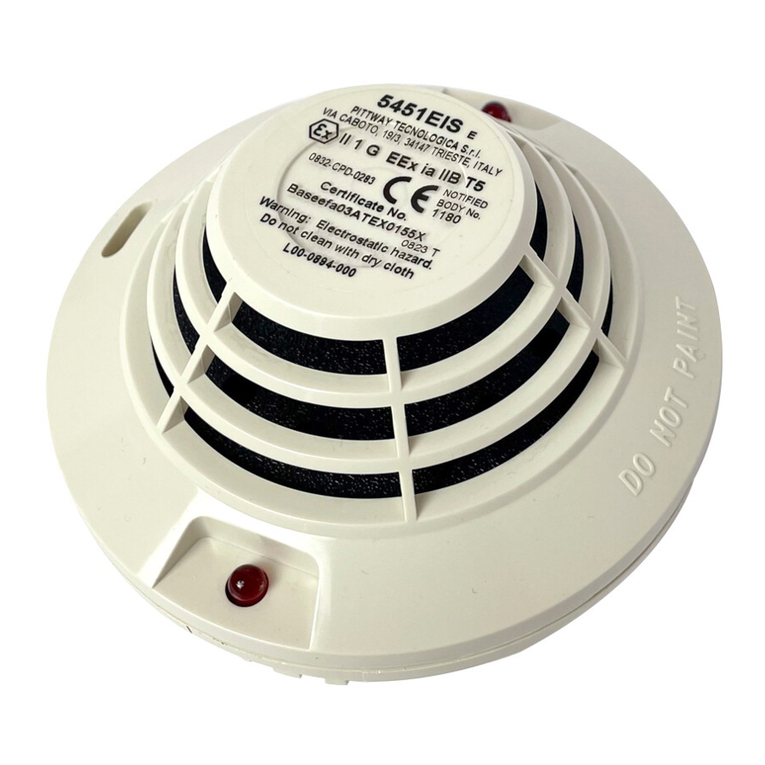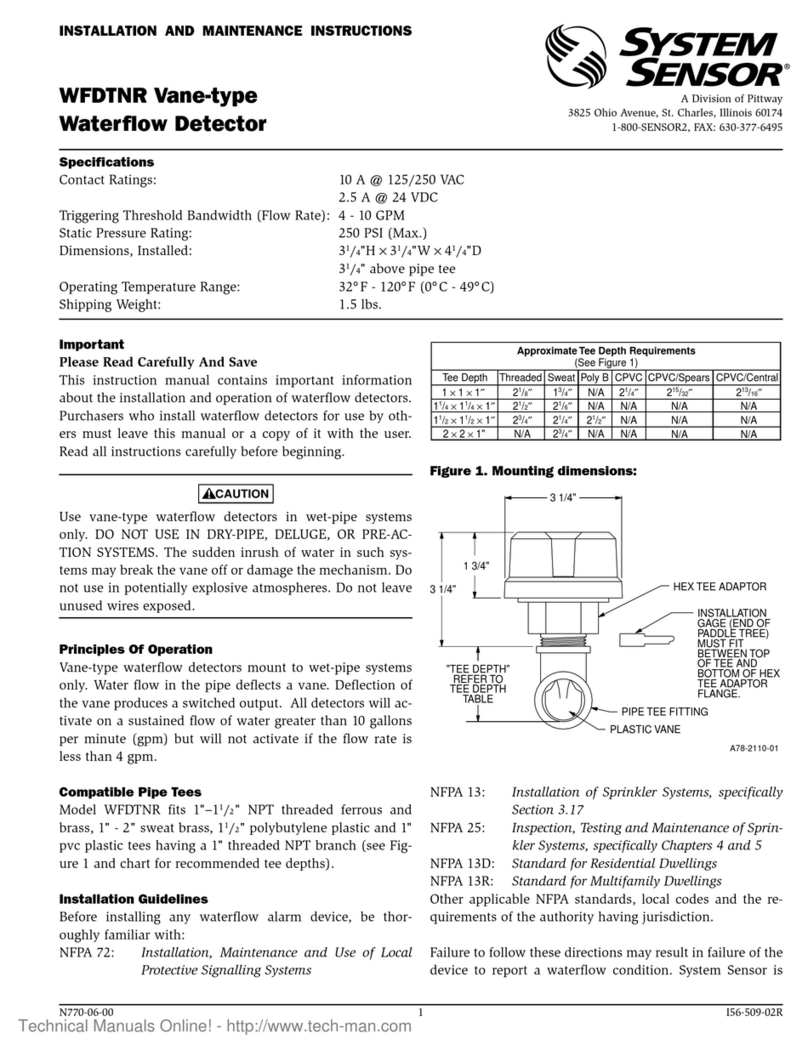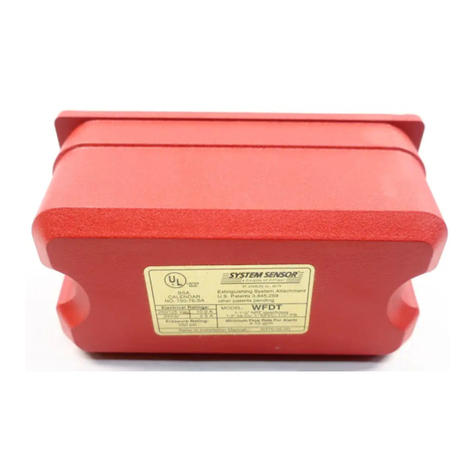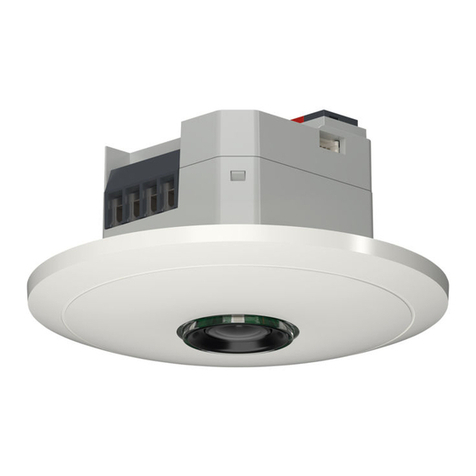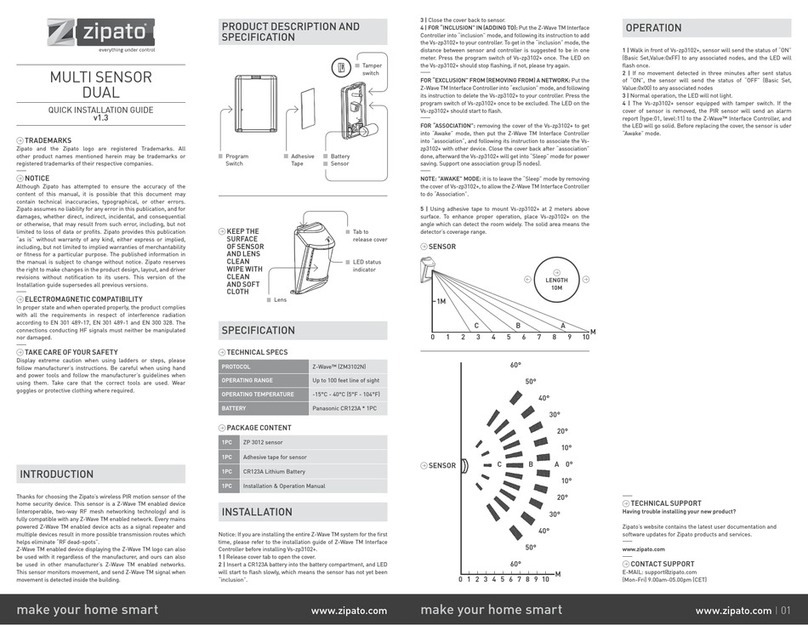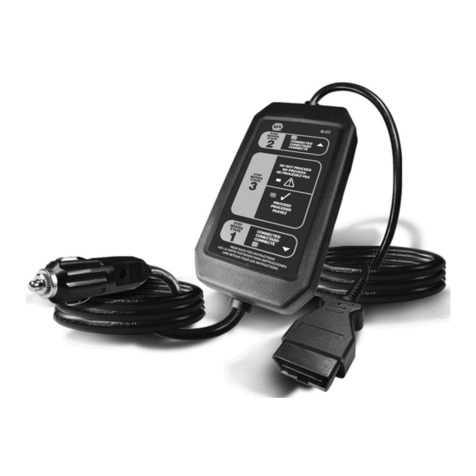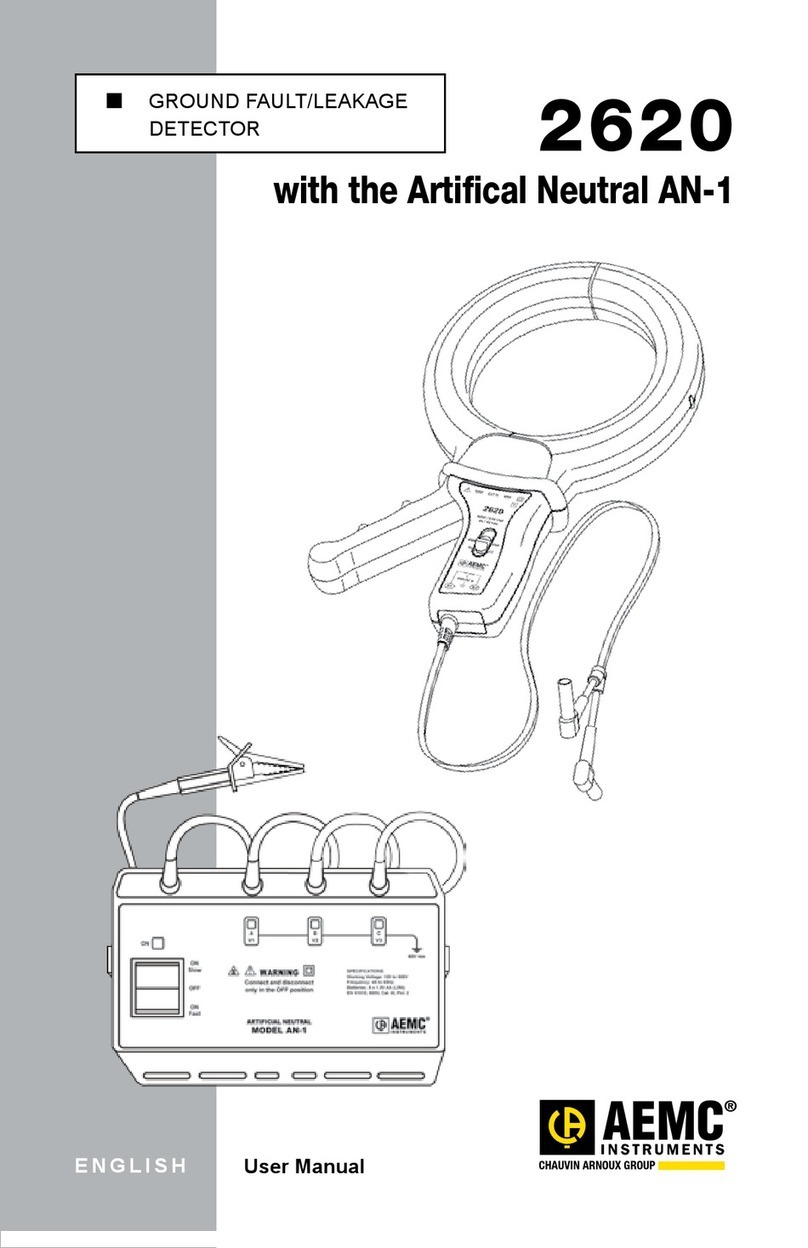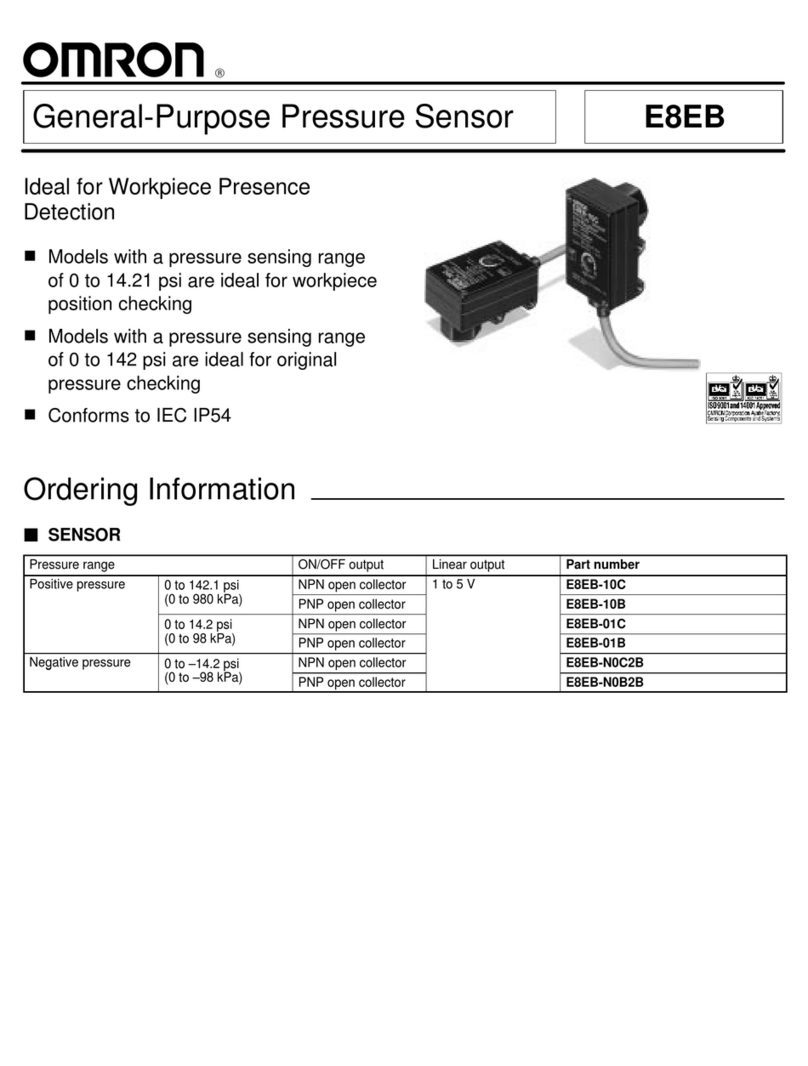Pittway SYSTEM SENSOR 1151EIS User manual

D100-59-00 1 I56-720-10
1151EIS Intrinsically-safe Plug-in
Ionization Smoke Detector
INSTALLATION AND MAINTENANCE INSTRUCTIONS
A Division of Pittway
3825 Ohio Avenue, St. Charles, Illinois 60174, USA
1-800-SENSOR2, FAX: 630-377-6495
NOTICE: This manual should be left with the owner/user
of this equipment.
IMPORTANT:
This detector should be cleaned at least once a
year. If cleaning is performed with non-intrinsically safe
equipment, it must be conducted outside the hazardous area.
General Description
Model 1151EIS ionization smoke detectors use state-of-the-
art sensing chambers. These detectors are designed to af-
ford open area protection and are for use with compatible
two-wire control panels only. Each detector is equipped
with two LEDs that provide a local, visual indication of de-
tector status. Remote LED annunciator capability is also in-
cluded. Once the detector senses a fire, it latches in alarm
and remains in this condition until it is reset by a momen-
tary power interruption. The detector can be tested by acti-
vating an internal reed switch with a test magnet.
NOTE: Although the 1151EIS is a UL listed smoke-auto-
matic fire detector, UL has not evaluated this prod-
uct for use in hazardous environments. The
detector is FMRC and BASEEFA approved for in-
trinsic safety.
Installation
NOTE: All wiring must comply with all applicable na-
tional codes of practice and regulations.
WARNING
Disconnect the power to the initiating device before install-
ing the detectors.
1. Detector Installation
A. Install the base following the base installation instruc-
tions.
B. Position the detector in the base receptacle.
C. Rotate the detector clockwise until it moves into
place.
D. Continue rotating the detector clockwise until it locks
in place.
Specifications
Height: 43 mm (1.7 inches)
Diameter: 101 mm (4.0 inches)
Weight: 110 g (0.25 lb)
Input Voltage: 15 to 28 VDC
Installation Temperature Range:
U.S. – 32°F to 120°F (0°C to 49°C)
Europe – -10°C to 60°C
Operating Humidity Range: 10% to 93% Relative Humidity
Intrinsic Safety Rating: EEx ia IIC T5
(Latching alarm reset by momentary power interruption)
2. Tamper-Resistance Feature
This detector includes a tamper-resistance feature that
prevents its removal from the bracket without the use of
a tool. To make the detector tamper-resistant, remove
the smaller tab by breaking it at the scribed line on the
tamper resistance tab before installing the detector. The
tamper-resistance tab is on the detector mounting
bracket.
To remove a tamper-resistant detector from the bracket, use
a pocket screwdriver, or similar tool, to depress the tamper-
resistance tab and turn the detector counterclockwise. The
tab is accessible through the slot on the mounting bracket.
CAUTION
Dust covers are an effective way to limit the entry of dust
into smoke detector sensing chambers. However, they may
not completely prevent airborne dust particles from enter-
ing the detector. Therefore, System Sensor recommends the
removal of detectors before beginning construction or other
dust producing activity. Be sure to remove the dust covers
from any sensors that were left in place during construction
as part of returning the system to service.
Testing
Before testing, notify the proper authorities that the smoke
detector system is undergoing maintenance, and that it will
be temporarily out of service. Disable the zone or system
undergoing maintenance to prevent unwanted alarms.
IMPORTANT:
If testing is done with non-intrinsically safe
methods, it should be conducted outside the hazardous area.
Detectors must be tested after installation and following
periodic maintenance. Test the detector as follows:
A. Test Magnet (Model M02-04-01 or M02-09-00)
1. Position the test magnet against the cover in the loca-
tion shown in Figure 1.
ACCESS MENUS

D100-59-00 2 I56-720-10
2. The detector should light both LEDs within 5 seconds,
indicating an alarm, and annunciate the panel.
B. Calibrated Sensitivity Test
The MOD400R Test Module is used with a digital or analog
voltmeter to test calibrated detector sensitivity as described
in the test module manual.
C. Smoke Entry Test
Aerosol generators for smoke entry testing are available
from a number of third party manufacturers (e.g.,
Gemini Scientific). Following the manufacturer’s instruc-
tions, apply aerosol until the panel alarms.
Maintenance
Before cleaning, notify the proper authorities that the sys-
tem is undergoing maintenance and will be temporarily out
of service. Disable the system to prevent unwanted alarms.
1. Remove the sensor to be cleaned from the system.
2. Remove the sensor cover. Use a small standard screw-
driver to release each of the four cover removal tabs that
hold the cover in place.
Figure 1. Test magnet positioning:
Figure 2:
This smoke detector is designed to activate and initiate emergency ac-
tion, but will do so only when it is used in conjunction with an authorized
fire alarm system. This detector must be installed in accordance with
NFPA standard 72.
Smoke detectors will not work without power. AC or DC powered
smoke detectors will not work if the power supply is cut off.
Smoke detectors will not sense fires which start where smoke does not
reach the detectors. Smoldering fires typically do not generate a lot of
heat which is needed to drive the smoke up to the ceiling where the
smoke detector is usually located. For this reason, there may be large de-
lays in detecting a smoldering fire with either an ionization type detector
or a photoelectric type detector. Either one of them may alarm only after
flaming has initiated which will generate the heat needed to drive the
smoke to the ceiling.
Smoke from fires in chimneys, in walls, on roofs or on the other side of a
closed door(s) may not reach the smoke detector and alarm it. A detector
cannot detect a fire developing on another level of a building quickly or at
all. For these reasons, detectors shall be located on every level and in
every bedroom within a building.
Smoke detectors have sensing limitations, too. Ionization detectors and
photoelectric detectors are required to pass fire tests of the flaming and
smoldering type. This is to ensure that both can detect a wide range of
types of fires. Ionization detectors offer a broad range of fire sensing capa-
bility but they are somewhat better at detecting fast flaming fires than
slow smoldering fires. Photoelectric detectors sense smoldering fires better
than flaming fires which have little, if any, visible smoke. Because fires de-
velop in different ways and are often unpredictable in their growth, nei-
ther type of detector is always best, and a given detector may not always
provide early warning of a specific type of fire.
In general, detectors cannot be expected to provide warnings for fires re-
sulting from inadequate fire protection practices, violent explosions, es-
caping gases which ignite, improper storage of flammable liquids like
cleaning solvents which ignite, other similar safety hazards, arson, smok-
ing in bed, children playing with matches or lighters, etc. Smoke detectors
used in high air velocity conditions may have a delay in alarm due to dilu-
tion of smoke densities created by frequent and rapid air exchanges. Addi-
tionally, high air velocity environments may create increased dust
contamination, demanding more frequent maintenance.
Smoke detectors cannot last forever. Smoke detectors contain electronic
parts. Even though smoke detectors are made to last over 10 years, any
part can fail at any time. Therefore, smoke detectors shall be replaced after
being in service for 10 years. The smoke detector system that this detector
is used in must be tested regularly per NFPA 72. This smoke detector
should be cleaned regularly per NFPA 72 or at least once a year.
WARNING
The Limitations of Property Protection Smoke Detectors
3. Vacuum the outside of the screen carefully without re-
moving it.
4. Remove the sensor screen. Pull the screen straight away
from the sensing chamber until it snaps out of place. Re-
placement screens are available.
5. Use a vacuum or clean, compressed air to remove dust
and debris from the sensing chamber.
6. Reinstall or replace the sensing chamber screen by con-
tact.
7. Reinstall the sensor cover. Use the test module socket
and LEDs to align the cover with the sensor. Snap the
cover into place.
8. When all sensors have been cleaned, restore power to
the system and test the sensor(s) as described in the
TESTING section of this manual.
ACCESS MENUS

D100-59-00 3 I56-720-10
Terminals 2 and 4 (B401 Base)
Group Capacitance Inductance L/R Ratio
µFmHµH/OHM
IIC 0.13 4.2 55
IIB 0.39 12.6 165
IIA 1.04 33.6 440
SAFE AREA HAZARDOUS AREA
(Note 2)
}
To next
detector(s)
(Note 5)
3214
Terminals 2 and 1 (B401 Base)
Group Capacitance Inductance L/R Ratio
µFmHµH/OHM
IIC 0.04 4.2 55
IIB 0.30 12.6 165
IIA 0.95 33.6 440
Typical 1151EIS System Diagram
OR
OR
Safe area apparatus, which is
unspecified except that it must
not be supplied from or contain
under normal or abnormal
conditions a source of potential
with respect to earth in excess of
250 Vrms or 250 VDC
Shunt Zener
Diode Safety
Barrier or
Isolation Barrier
(see Note 1.)
Model 1151EIS
detector
EEx ia IIC T5
BASEEFA No.
EX95C2071
(B401 Base)
Table 2.
Table 1.
Notes:
1. Any single channel shunt zener diode safety barrier or single channel of a dual channel shunt zener diode safety barrier certified
by BASEEFA or any EEC approved certification body to [EEx ia] IIC having the following or lower output parameters:
Uz = 28V; Imax: out = 93.3 mA; Wmax: out = 0.67 W
In any safety barrier used, the output current must be limited by a resistor "R", such that Imax:out = Uz/R. Or any of the follow-
ing isolation barriers may be used:
MTL : MTL3043 (Ex86B2285), MTL4061 (Ex94C2040), MTL5061 (Ex96D2426)
Pepperl + Fuchs : KHDO-ICS/Ex151 (Ex88B2331), KHDO-ICS/Ex251 (Ex88B2331), KFDO-CS-Ex151 (Ex88B2331)
2. The capacitance and inductance or inductance/resistance (L/R) ratio of the hazardous area cables between the power terminals 2
and 4 (B401 base) must not exceed the values shown in Table 1.
3. The installation must comply with the appropriate national installation requirements, e.g. in the U.K. BS5345:Part 4:1977.
4. The electrical circuit in the hazardous area must be capable of withstanding an A.C. test voltage of 500 VRMS to earth or frame of
the apparatus for one minute. This note does not apply when using an isolation barrier.
5. An external light emitting diode (LED) may be fitted to terminals 2 and 1 (B401 base). The capacitance and inductance or induc-
tance/resistance (L/R) ratio of the hazardous area cables between 2 and 1 must not exceed the values shown in Table 2. The sur-
face area of the LED must lie between 20mm2and 10cm2. The LED and its terminations must be afforded a degree of protection of
at least IP20, and be segregated from other circuits and conductors as defined in clause 5 of EN50020: 1977.
6. The zone wiring of the detector bases should be checked before the detector heads are installed. To make this possible, this
base contains a special spring-type shorting jumper. After a detector base is properly wired and mounted to an electrical box,
make sure that the shorting spring is in contact with terminal 3. This temporary connection permits the wiring of the loop to be
checked for continuity before installation of the detector heads. The shorting spring in the base automatically disengages when
the detector head is removed from the base. DO NOT remove the shorting spring since it reengages as the detector head is
turned in the base, completing the circuit.
R12-168-00, REV A
CAUTION
Please refer to control panel installation instructions for specific barrier/control panel compatibility information.
ACCESS MENUS

D100-59-00 4 I56-720-10
© System Sensor 1998
Three-Year Limited Warranty
System Sensor warrants its enclosed smoke detector to be free from de-
fects in materials and workmanship under normal use and service for a
period of three years from date of manufacture. System Sensor makes no
other express warranty for this smoke detector. No agent, representative,
dealer, or employee of the Company has the authority to increase or alter
the obligations or limitations of this Warranty. The Company’s obligation
of this Warranty shall be limited to the repair or replacement of any part of
the smoke detector which is found to be defective in materials or work-
manship under normal use and service during the three year period com-
mencing with the date of manufacture. After phoning System Sensor’s toll
free number 800-SENSOR2 (736-7672) for a Return Authorization number,
send defective units postage prepaid to: System Sensor, Repair Depart-
ment, RA #__________, 3825 Ohio Avenue, St. Charles, IL 60174. Please
include a note describing the malfunction and suspected cause of failure.
The Company shall not be obligated to repair or replace units which are
found to be defective because of damage, unreasonable use, modifica-
tions, or alterations occurring after the date of manufacture. In no case
shall the Company be liable for any consequential or incidental damages
for breach of this or any other Warranty, expressed or implied whatsoever,
even if the loss or damage is caused by the Company’s negligence or fault.
Some states do not allow the exclusion or limitation of incidental or conse-
quential damages, so the above limitation or exclusion may not apply to
you. This Warranty gives you specific legal rights, and you may also have
other rights which vary from state to state.
SAFE AREA HAZARDOUS AREA
(Note 2)
}To next
detector(s)
(Note 5)
3214
FMRC Approved System Diagram
INTEGRATION OF THE 1151EIS DETECTOR INTO A SYSTEM
Safe area apparatus, which is
unspecified except that it must
not be supplied from or contain
under normal or abnormal
conditions a source of potential
with respect to earth in excess of
250 Vrms or 250 VDC
FMRC Entity
Approved
Intrinsic Safety
Barrier
Model 1151EIS
detector
(B401 Base)
Notes:
1. Any single channel shunt zener diode safety barrier or single channel of a dual channel shunt zener diode safety barrier certified
by FMRC.
2. The entity concept allows interconnection of intrinsically safe apparatus to associated apparatus not specifically examined in
such combination. The criteria for interconnection is the voltage (Vmax) and current (Imax) that an intrinsically safe apparatus
can receive and remain intrinsically safe, considering faults, must be equal to or greater than the voltage (Voc or Vz) and current
(Isc or Iz) levels which can be delivered by the associated apparatus, considering faults and applicable factors. In addition, the
maximum unprotected capacitance (Ci) and inductance (Li) of the intrinsically safe apparatus, including interconnecting wiring,
must be equal to or less than the capacitance and inductance that can be safely connected to associated apparatus.
3. The installation shall be in accordance with NEC NASI/NFPA 70 and ANSI/ISA RP126.
4. Associated apparatus must be installed in accordance with manufacturers' instructions.
5. An external light emitting diode (LED) should be mounted in an enclosure conforming to the requirements set forth in ANSI/ISA
Standard S82.01, S82.02 and S82.03.
6. No revisions without prior FMRC authorization.
7. The zone wiring of the detector bases should be checked before the detector heads are installed. To make this possible, this
base contains a special spring-type shorting jumper. After a detector base is properly wired and mounted to an electrical box,
make sure that the shorting spring is in contact with terminal 3. This temporary connection permits the wiring of the loop to be
checked for continuity before installation of the detector heads. The shorting spring in the base automatically disengages when
the detector head is removed from the base. DO NOT remove the shorting spring since it reengages as the detector head is
turned in the base, completing the circuit.
R12-165-00, REV A
09 / 06 / 96
Maximum Parameters
Vmax = 28 V
Imax = 93.3 mA
Ci = 0
Li = 0 Class I, Division 1, Groups A, B, C, D
Hazardous (classified) locations
ACCESS MENUS
Table of contents
Other Pittway Security Sensor manuals
Popular Security Sensor manuals by other brands

APG
APG IRU Series installation guide
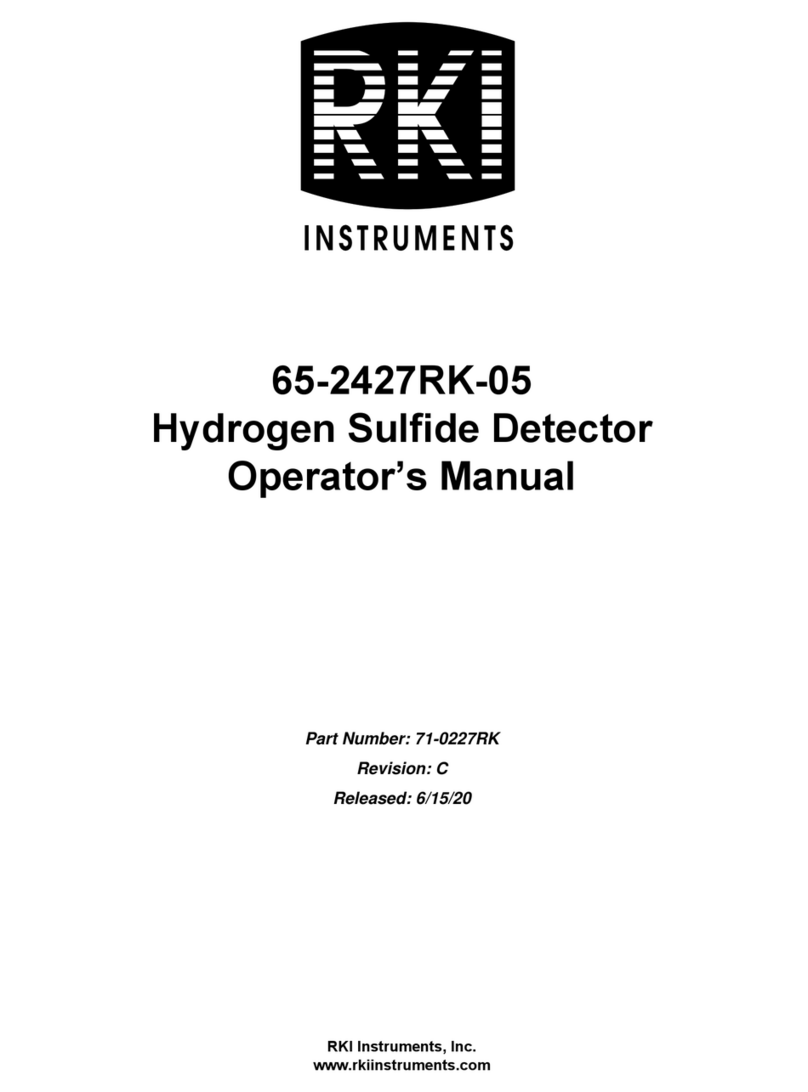
RKI Instruments
RKI Instruments 65-2427RK-05 Operator's manual

SUREN
SUREN M-TEC CDP-808 Installation, operation and specification manual
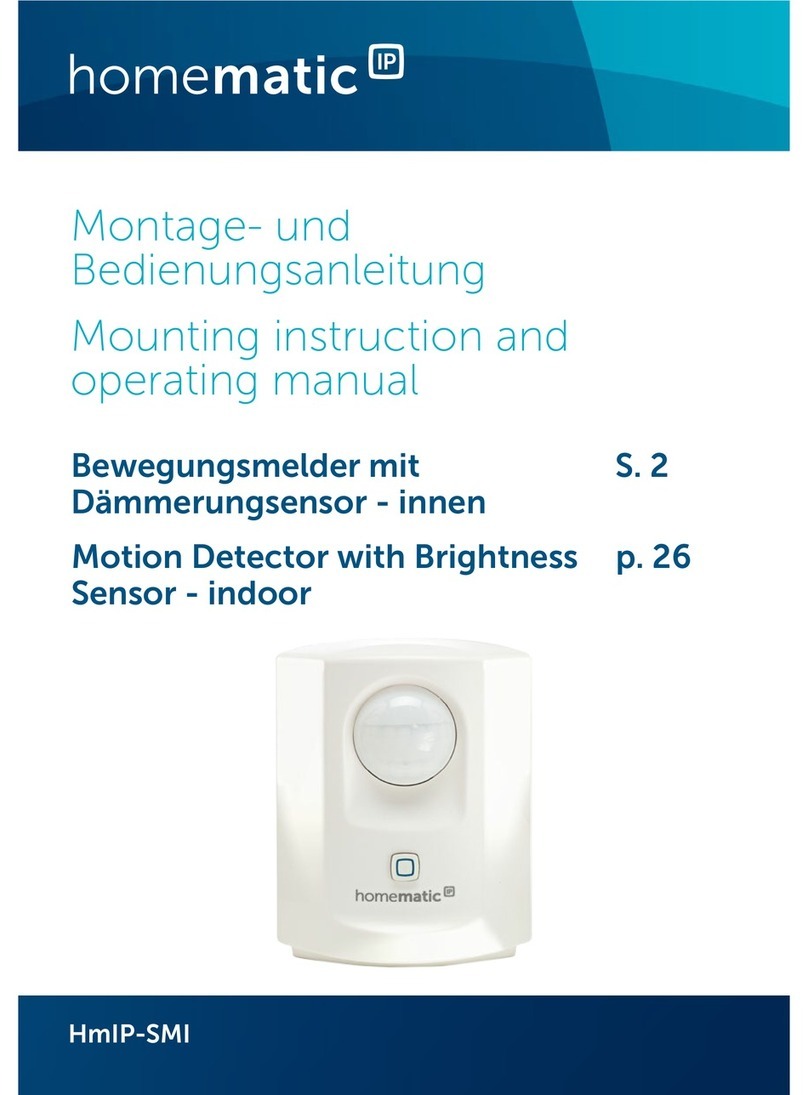
HomeMatic
HomeMatic HmIP-SMI Mounting instruction and operating manual
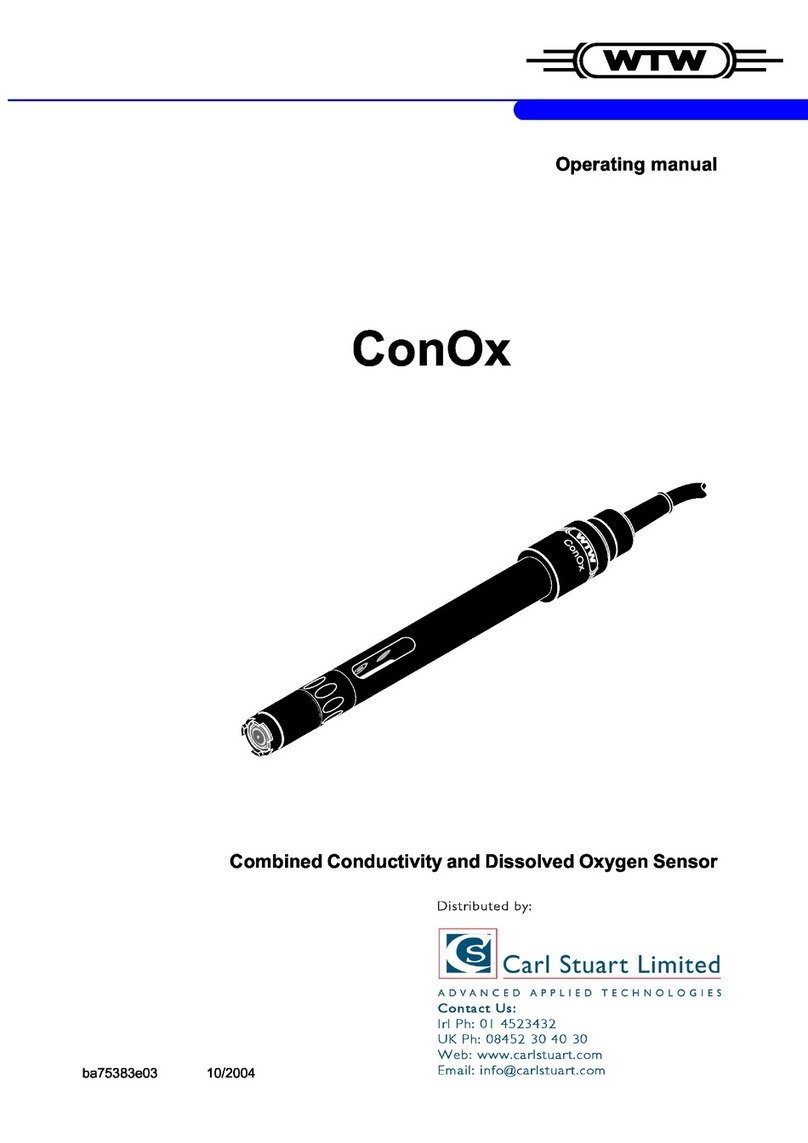
wtw
wtw ConOx-3 operating manual

Amprobe
Amprobe ULD-410 user manual
UNICONTROL Electronic
UNICONTROL Electronic S-SW-8 Resumed Manual
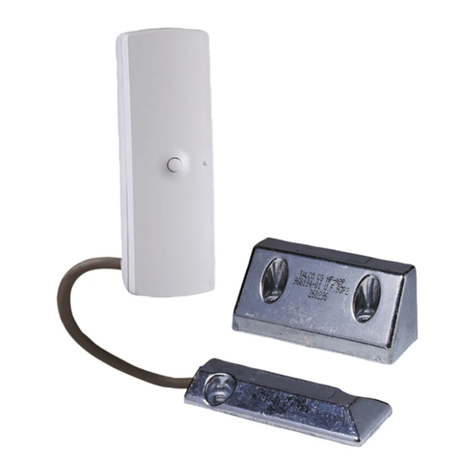
DELTA DORE
DELTA DORE TYXAL DOS installation guide
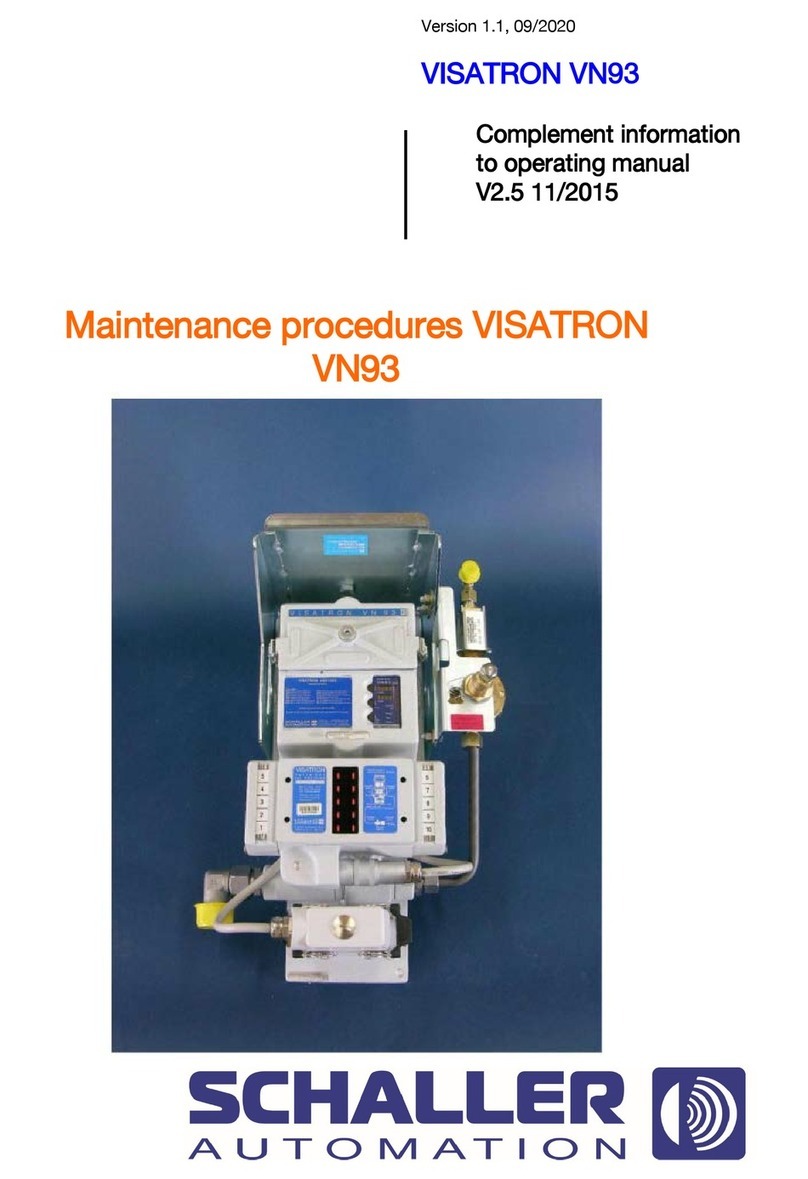
Schaller Automation
Schaller Automation VISATRON VN93 Series Maintenance procedures

Safety Technology International
Safety Technology International STI-7535MED Quick installation
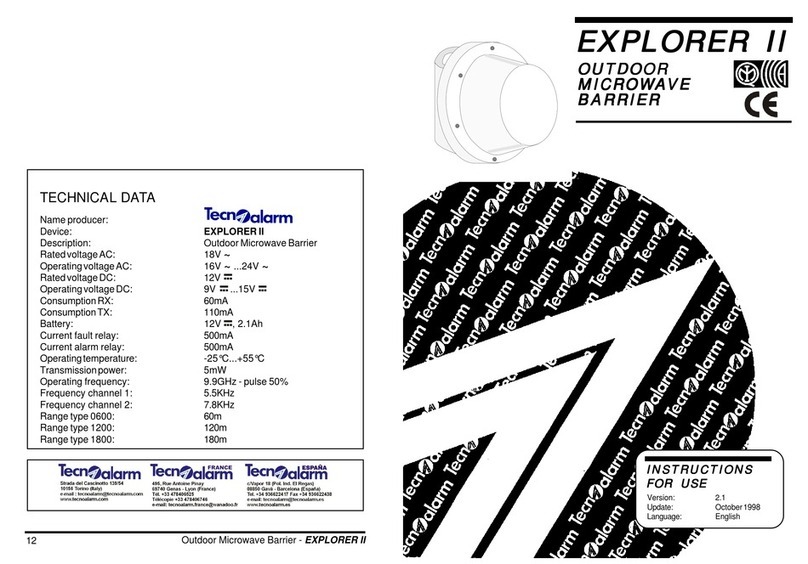
Tecnoalarm
Tecnoalarm EXPLORER II Instructions for use
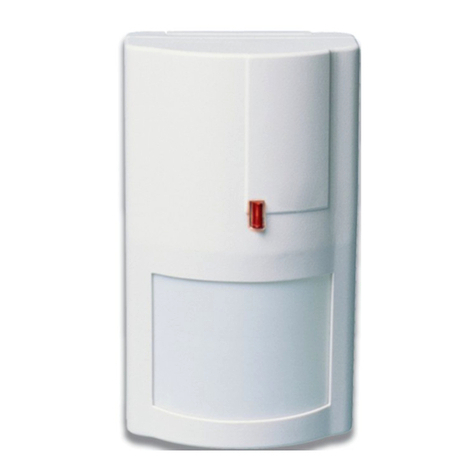
DSC
DSC WLS904P-433 quick start guide
